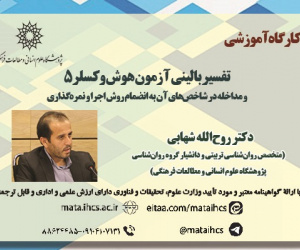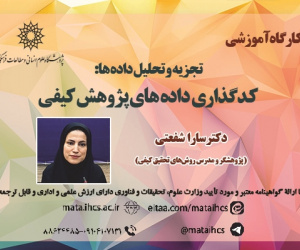تبیین ابعاد، مؤلفه ها و نشانگرهای محیط یادگیری جذاب (مقاله علمی وزارت علوم)
درجه علمی: نشریه علمی (وزارت علوم)
آرشیو
چکیده
مقدمه و هدف: امروزه مدارس پیشرو به خوبی دریافته اند که یادگیری فعال، خلاقانه و فراگیرمحور، در گرو ایجاد محیط یادگیری جذاب و دلپذیر است. با این رویکرد، هدف از پژوهش حاضر، تبیین ابعاد، مؤلفه ها و نشانگرهای محیط های یادگیری جذاب بود. روش شناسی پژوهش: این پژوهش از لحاظ هدف، کاربردی است و از لحاظ مبانی هستی شناسی، مبتنی بر پارادایم تفسیری است. روش پژوهش، کیفی و راهبرد مورد استفاده، مرور نظام مند مبتنی بر الگوی سندلوسکی و باروسو (2007) بود. برای استخراج نشانگرهای محیط یادگیری جذاب، تعداد 13 پژوهش که گزارش آن ها در مجلات داخلی یا خارجی منتشر شده بود، به روش نمونه گیری هدفمند انتخاب و مورد مطالعه قرار گرفت. ابزار گردآوری اطلاعات، مقالات منتخب بود. تحلیل اطلاعات از طریق کدگذاری نظری و مقوله بندی صورت گرفت. اعتبار تحلیل ها با استناد به ضریب لاوشه تأیید شد. یافته ها: یافته ها بیانگر دستیابی به الگوی محیط یادگیری جذاب مشتمل بر 70 نشانگر، 18 مؤلفه و 7 بعد بود. ابعاد و مؤلفه های شناسایی شده عبارت از مدرسه زندگی؛ مدرسه دوستدار کودک؛ جاذبه های علمی، ادبی، فرهنگی، هنری؛ زیرساخت ها؛ امنیت و آرامش؛ آموزش فراگیر؛ و ارتباطات آموزشی هستند. بحث و نتیجه گیری: این یافته ها چشم اندازی عملی برای طراحی محیط های یادگیری جذاب و الهام بخش ارائه می دهد که می توانند توسعه فردی و تحصیلی دانش آموزان را تسهیل کنند.Explaining the Dimensions, Components, and Indicators of an attractive Learning Environment
Background and Objective: Today, leading schools have recognized that active, creative, and learner-centered education depends on creating an attractive and pleasant learning environment. Thus, the present study aimed to explain the dimensions, components, and indicators of attractive learning environments.
research methodology : This research is applied in purpose. Using a qualitative methodology within the interpretive paradigm, a systematic review based on Sandelowski and Barroso’s (2007) framework was conducted. Thirteen studies published in national and international journals were purposefully selected and analyzed through theoretical coding and categorization.
Findings: The findings revealed a comprehensive model of engaging learning environments comprising 70 indicators, 18 components, and 7 dimensions. The identified dimensions (and components) include: School as Life (Promoting social responsibility; authentic and situational learning, and authentic assessment); Child-Friendly School (Active and learner-centered teaching; gamification of educational activities, and environmental suitability); Scientific, Literary, Cultural, and Artistic Attractions (Artistic and literary festivals, and local, national, and religious symbols); Infrastructure (The suitability of educational and quasi-educational spaces, and technological infrastructure); Safety and Calmness )Physical security and attractiveness; mental health, and environmental hygiene); Inclusive Education (Personalized learning, and equity); Educational Communication (Transparency; home-school interaction, and friendly relationships(.
Conclusion: These findings provide practical insights for designing inspiring learning environments that promote both academic and personal development.







